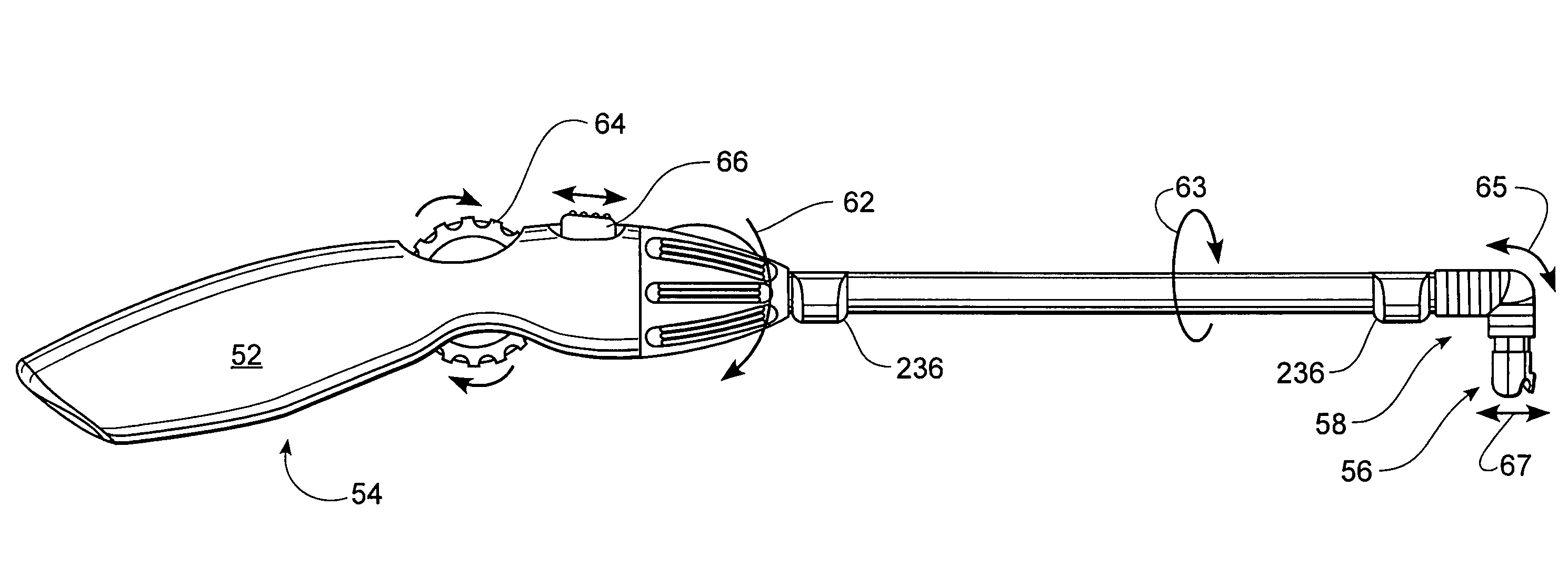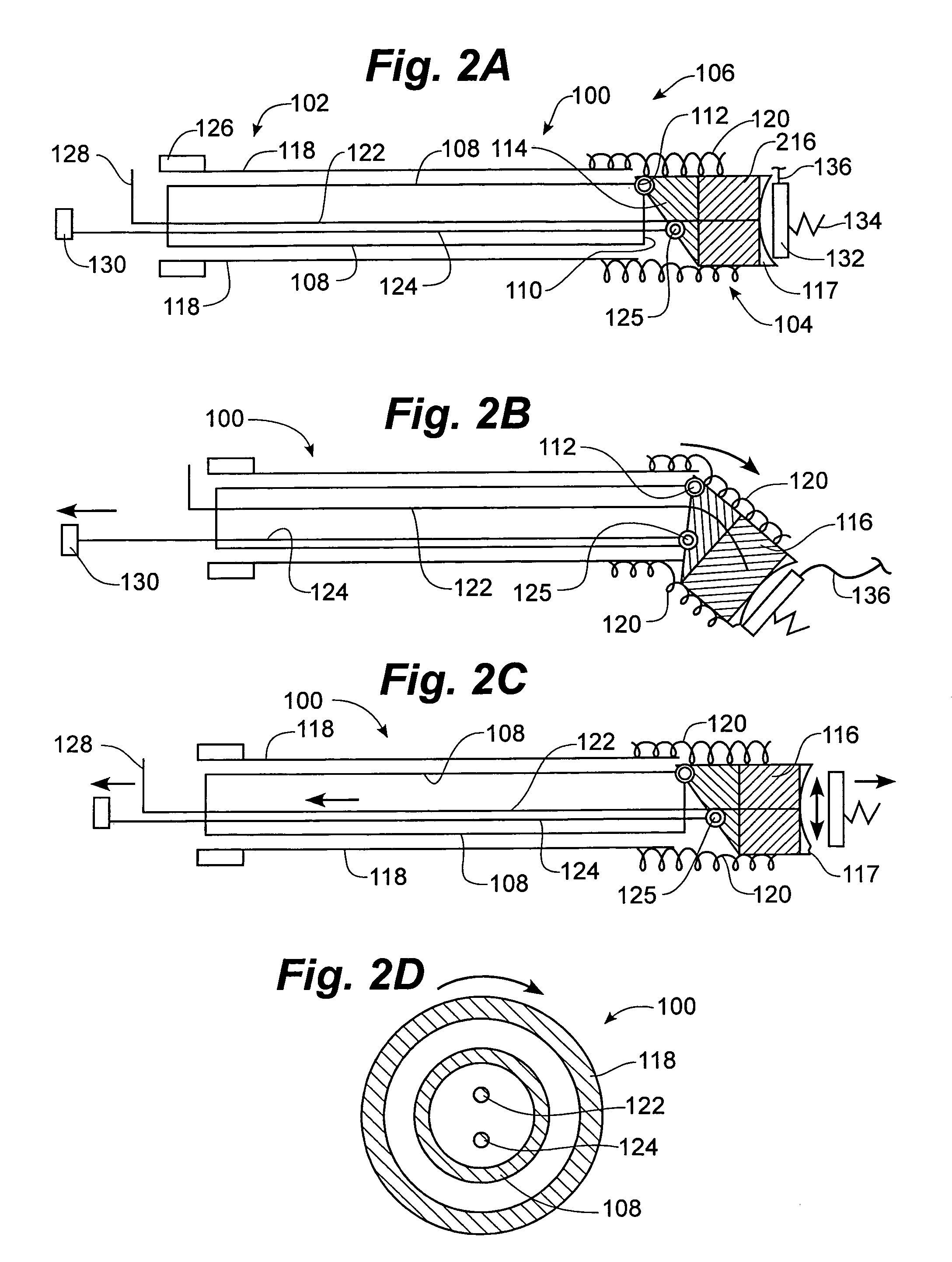Rotatable lead introducer
a lead introducer and rotatable technology, applied in the field of medical devices, can solve the problems of increasing fluoroscopy exposure, increasing the difficulty of electrophysiologists placing cs leads, and not clinically practicable lead placement to da
- Summary
- Abstract
- Description
- Claims
- Application Information
AI Technical Summary
Benefits of technology
Problems solved by technology
Method used
Image
Examples
Embodiment Construction
[0047]FIG. 1 illustrates a lead introducer 50 including a handle 52, a proximal portion 54, a distal portion 56, and a bendable portion 58. Introducer 50 further includes a rotation / torque knob or control 62, a steering or bending knob or control 64, and a release slider control 66. Knob 64 can be rotated to effect bending movement indicated at 65. Control 66 can be slid to effect head release indicated at 67. Knob 62 can be rotated to effect outer tube and collet rotation indicated at 63. Lead guides 236 may allow the lead to be rotatably carried with the rotating outer tube. The various elements introduced in FIG. 1 will be described in detail elsewhere.
[0048]FIG. 2A illustrates a highly diagrammatic lead introducer 100 including a proximal portion 102, a distal portion 104, and a bendable portion 106. Lead introducer 100 includes an inner stem or stiffener 108 which may be a solid shaft or tube that does not rotate and may be fixedly secured to the handle in some embodiments. Int...
PUM
 Login to View More
Login to View More Abstract
Description
Claims
Application Information
 Login to View More
Login to View More - R&D
- Intellectual Property
- Life Sciences
- Materials
- Tech Scout
- Unparalleled Data Quality
- Higher Quality Content
- 60% Fewer Hallucinations
Browse by: Latest US Patents, China's latest patents, Technical Efficacy Thesaurus, Application Domain, Technology Topic, Popular Technical Reports.
© 2025 PatSnap. All rights reserved.Legal|Privacy policy|Modern Slavery Act Transparency Statement|Sitemap|About US| Contact US: help@patsnap.com



